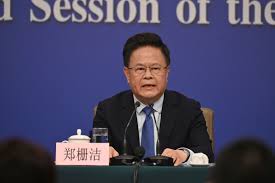When you purchase through links on our site, we may earn an affiliate commission. This doesn’t affect our editorial independence.
The prevailing use of artificial intelligence (AI) by Chinese fund managers is swiftly steering the nation’s $10 trillion fund management industry. The AI revolution is confronting the well-known international players and accentuating China’s role in the realm of technological innovation.
The successful implementation of artificial intelligence in China is the work of High-Flyer, a renowned Chinese hedge fund, and has been a game-changer in this regard. High-Flyer, which runs a multi-billion-dollar portfolio and has AI startup DeepSeek as its brainchild, made an industry revolutionist move by introducing AI. DeepSeek’s cost-effective, state-of-the-art model with stringent training standards not only received extensive recognition from Silicon Valley but also imposed disruption on the Western market.
The amazing success of High-Flyer has provoked a real race among other Chinese hedge funds such as Baiont Quant, Wizard Quant, and Mingshsi Investment Management in their AI projects. These companies utilize AI technology to identify market data and generate personalized trading signals that cater to investors’ risk preferences. Feng Ji, CEO of Baiont Quant, disclosed that AI-powered quant strategies two years ago were received with doubt. Today, those who do not use AI will be disrupted by the market.
Beyond the hedge fund landscape, the AI revolution touches the operations of mutual fund companies as well. More and more in-depth use of DeepSeek by mutual fund companies is on the rise. This is facilitating the AI technology application at a much larger scale, which in turn is increasing the operational efficiency of enterprises. For example, Zheshang Fund Management unveiled a fund whose robots are able to make predictions of trends on the market and pick shares, which obviously shows the trend away from human employment towards technology and data-driven decision-making in the industry.
The integration of AI into companies and the increased demand for programming skills and computing resources needed to construct intelligent systems have created a job market that is more competitive than ever before. Smaller, more financially secure local governments such as Shenzhen enjoy the clout of supporting technological advances by contributing significant portions of their budgets to finance these projects. Such support opens up the complex web of competitive financial markets to identify the strategic role of AI as a game-changer in the field of finance.
The swift advancements and implementations of AI may come with various challenges. The industry finds itself in a position where there are not enough expert people in its workforce who can work on AI technology and are, at the same time, experienced enough to come up with practical solutions. Furthermore, the use of AI also brings about new challenges, such as the imperfections in the models and overfitting, which can lead to a financial organisation’s loss of a great deal of money. Nevertheless, authorities are facing the challenge of creating a broad framework for the ethical and transparent use of AI in the financial markets.
On the other hand, regardless of these problems, the trend centering around AI implementation in fund management in China is still positive. Companies employing AI, like High-Flyer, that have been able to leverage the technology to the degree of success, and DeepSeek, which has grown to a new level of operation, are examples of the change in the investment paradigm. With the ongoing improvements in technology that make AI-based solutions technological breakthroughs, this technology is expected to become the engine of growth for smaller fintech players.
Thus, the AI revolution and its adoption by Chinese fund managers are modernizing and redefining the fund management business today. The new state of economic activity in China presumes not only a very challenge to Western countries but also offers enough room for drug data to run more efficient and competitive financial ecosystems.








